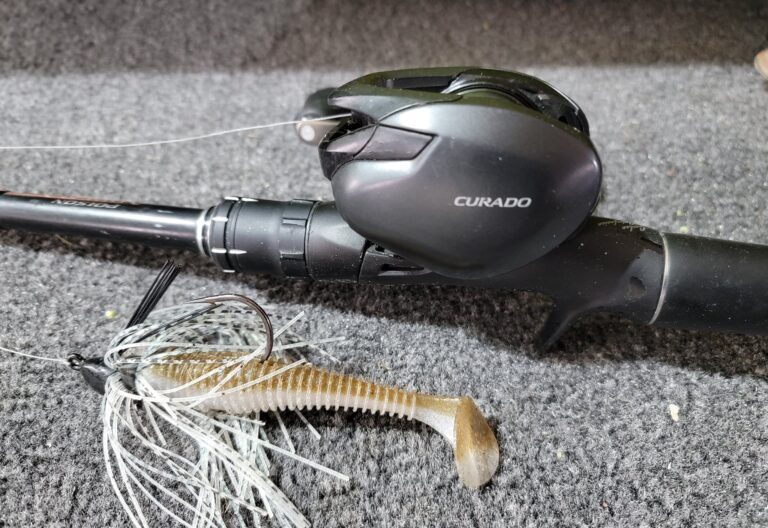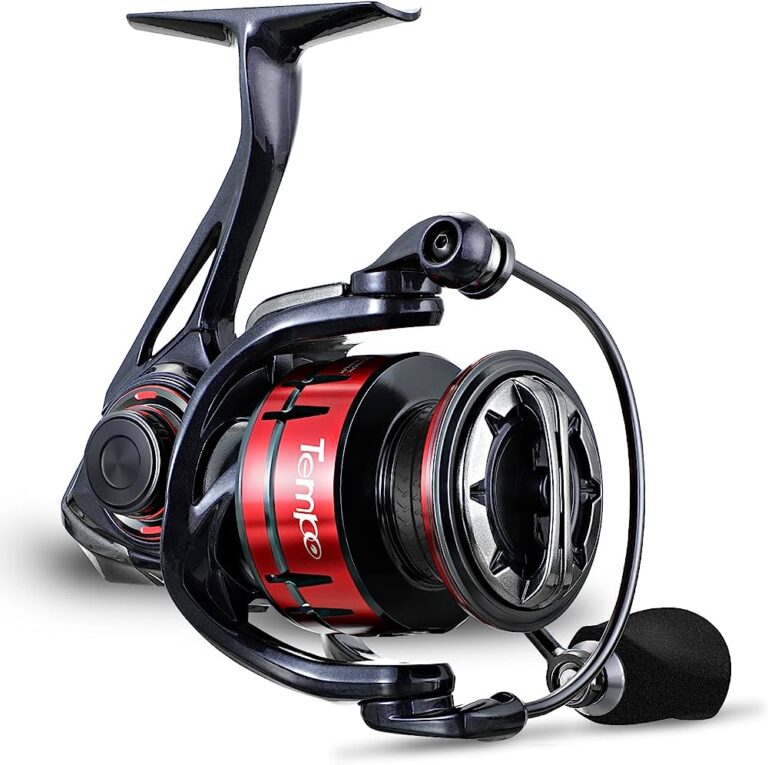Spinning reel retrieve speed options vary according to fishing styles and conditions. A faster retrieve is better for covering large areas and catching fast-moving fish, while a slower one works best for bottom fishing and jigging in deeper waters.
Choosing the right retrieve speed for your spinning reel is crucial in fishing success. It can be affected by various factors such as wind, water temperature, baitfish, and the type of fish you’re targeting. Consequently, it’s essential to have a good understanding of the different options available and their implications for your fishing style.
In this guide, we’ll take an in-depth look at spinning reel retrieve speed options, their uses, and how to choose the right one for your needs. Whether you’re a seasoned angler or a beginner, this article will provide you with all the information you need to make informed decisions when selecting a spinning reel retrieve speed.

Credit: www.meltontackle.com
Understanding What Is Spinning Reel Retrieve Speed
Spinning Reel Retrieve Speed Options
Spinning reel retrieve speed is a significant factor when it comes to fishing. Retrieving your bait at the right speed can determine whether you’ll have a successful day on the water or not. We’ll take a look at what spinning reel retrieve speed is, why it matters, and basic rules to help you perfect your fishing technique.
Definition Of Spinning Reel Retrieve Speed
Spinning reel retrieve speed refers to the rate at which the fishing line is reeled in. It’s the speed at which the spool turns when you’re reeling in your catch. Spinning reel retrieve speed is measured in gear ratio, which is the number of revolutions the spool makes for every turn of the reel’s handle.
Why Spinning Reel Retrieve Speed Matters In Catching Fish
The right spinning reel retrieve speed can make the difference between catching fish or not. Fish have different preferences in terms of bait movement, and the speed at which you retrieve your spinning reel determines how your bait moves. If it’s too slow or too fast, your bait won’t look natural, and fish will not be as eager to bite.
Basic Rules Of Spinning Reel Retrieve Speed
There are a few basic rules that can help you master spinning reel retrieve speed:
- Match the retrieve speed to the type of lure or bait: Different lures or baits require different retrieve speeds. Lighter lures or baits require a faster retrieve speed, while larger, heavier lures or baits require a slower retrieve speed.
- Vary retrieve speed: Varying your retrieve speed can imitate the motion of live prey and entice fish to bite. Start with a steady retrieve speed, then speed up or slow down in intervals to see what works best.
- Consider water temperature: Water temperature affects fish behavior. In colder water, fish are slower and less active, so a slower retrieve speed may be necessary. In warmer water, fish tend to be more active, so a faster retrieve may be more effective.
- Pay attention to the fish: Always be observant of the fish’s behavior and adjust your retrieve speed accordingly. If they are biting at your bait but not taking it, try changing the retrieve speed.
Mastering spinning reel retrieve speed takes practice, and it’s a skill that comes with experience. By applying these basic rules, you’ll have a better chance of catching more fish and having a successful day on the water.
Evaluating The Different Spinning Reel Retrieve Speed Options:
Spinning reel retrieve speed options: evaluating the different spinning reel retrieve speed options
As anglers, we all know that fishing is not only about the technique but also about the right equipment. The spinning reel is one of the essential gear for fishing that can make a significant difference in your results. The speed of retrieve is an essential feature of the spinning reel, and selecting the right speed can help you catch more fish.
We’ll delve into the advantages and disadvantages of different spinning reel retrieve speed options.
Advantages And Disadvantages Of Fast Retrieve Speeds
Fast spinning reel retrieve speed is an excellent option for experienced anglers who prefer catching aggressive fish, such as bass. Here are the key advantages and disadvantages of using fast retrieve speeds:
Advantages:
- Ideal for catching fish that are actively feeding and chasing bait
- Allows you to cover more water quickly
- Easy to set the hook with a fast retrieve speed
Disadvantages:
- Not ideal for catching inactive fish
- Can overwork the angler, leading to fatigue
- Not suitable for beginners who may be unable to keep up with the speed
Advantages And Disadvantages Of Slow Retrieve Speeds
Slow spinning reel retrieve speed is a great choice for beginner anglers who need extra time to learn how to use the spinning reel. Here are the key advantages and disadvantages of using slow retrieve speeds:
Advantages:
- Ideal for catching inactive and passive fish
- Provides more control over the bait and lure
- Helps to prevent fatigue
Disadvantages:
- Limited coverage of water
- Difficult to set the hook with a slow retrieve
- May not be well-suited for catching aggressive fish
Advantages And Disadvantages Of Medium Retrieve Speeds
Medium spinning reel retrieve speed is a perfect balance between fast and slow retrieves. Here are the key advantages and disadvantages of using medium retrieve speeds:
Advantages:
- Best option for most fishing scenarios
- Can be used for catching both active and passive fish
- Provides a balance between water coverage and control over the bait
- Efficient enough to prevent fatigue
Disadvantages:
- Not the best choice for quickly covering a lot of water
- Not as effective for catching aggressive fish as a fast retrieve speed
Choosing the right retrieve speed for your spinning reel can make a huge difference in your fishing success. Evaluate the fishing scenario and fish species you are targeting, and then choose the most appropriate retrieve speed accordingly. Experiment with the various retrieve speeds and find the one that works best for you.
Happy fishing!
Conclusion
Overall, the spinning reel retrieve speed is an important feature to consider when selecting the right spinning reel for your fishing needs. By taking into account your fishing method, target species, and personal preferences, you can choose the appropriate retrieve speed to optimize your fishing experience.
Whether you opt for a high speed retrieve for fast-moving lures or a slower retrieve for finesse techniques, there is a spinning reel on the market that can meet your demands. Remember to always handle your spinning reel with care and maintain it regularly to ensure longevity and optimal performance.
With the right spinning reel and retrieve speed combination, you can increase your chances of hooking that prized catch. So, go ahead and give it a shot, experiment with different retrieve speeds, and happy fishing!



